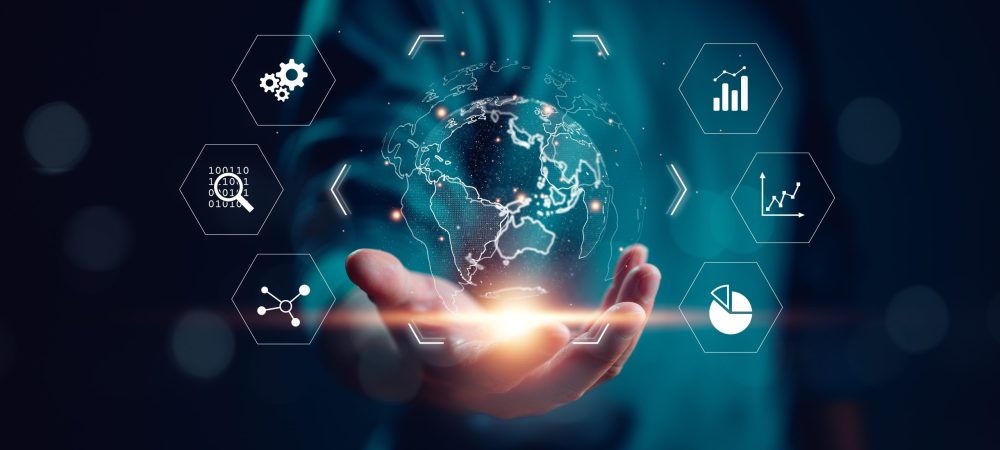Adam Fields, SVP, Product and Technology Strategy, Kofax, tells us his top tech trend predictions for 2023 – tested against his predictions for 2022.
How often do the predictors get held to task when it comes to what they foretell? Whether that’s in the worlds of sport or finance – or industry analysts playing Nostradamus with projected growth rates – too often we write for clicks and then move on, never to be held accountable. Today is a new day. This technologist will hold himself accountable for last year’s predictions and provide insight into what’s ahead for 2023. I had some hits, some misses and well…I’ll let you decide on others.
Here are a few, but not all, of my predictions from last year:
- Automation eliminates jobs? Hardly! If last year taught us anything, it’s that workers want purpose. It’s frustrating that it took a global pandemic for the world to focus on employee experience, but here we are. Humans + tech creates the best experience so that workers can focus on what matters most to them and their customers. Organizations were expected to spend more than $2 billion on intelligent automation in 2022, even during an economic downturn, which history dictates is exactly what happens when there aren’t enough workers to fill the open seats.
Prediction: ACCURATE
- We’ll see you at the mixed-reality water cooler. Okay, with the desire to be one of the cool kids, I got ahead of my skis on this one. It’s not that virtual reality (VR), Augmented Reality (AR) and mixed reality (MR) haven’t technologically progressed in the past twelve months, but the Metaverse is hardly being perceived as the greatest thing since the IP address at the moment. Much like it’s taken time for organizations to figure out how to apply AI technologies to real-world problems, so too will it take more time for the corporate world to blend with the virtual one – although this tech will continue to grow on the consumer side this year.
Prediction: SWING-AND-A-MISS
- Blockchain will not just be for pixelated monkey art. Wow. I was both right and somewhat right on this one. I posited that the NFT market would subside last year and true to form with any new tech fad, average prices fell by a whopping 92% since May 2022. At the same time, as global macroeconomic headwinds hit, the value of most cryptocurrencies plummeted. Enter the FTX scandal – which is still playing out as of this writing – combined with drying up start-up investments in general, and the adoption of Blockchain outside of crypto has slowed.
Prediction: SOMEWHAT RIGHT
- AI will go mainstream for next-gen automation. You might say that this was an obvious one, but it’s also been on the Top 10 list of every technology crystal ball holder for many years – and for many years they were wrong. But the combination of workers shortages, hybrid work and the most rapid capability advancement in recent memory, made this a reality in 2022. AI was one of the fastest-growing IT investment segments last year; IDC expected spending to reach $118 billion by the end of 2022, and it will more than double that to surpass $300 million in 2026. Other tools like GPT-3, Deep Mind and DALL-E – which many hadn’t even heard of at the end of 2021 – finally received the recognition that these digital helpers are here to stay.
Prediction: NAILED IT

And now, here are nine new predictions for which I will hold myself accountable for 2023:
- Back to centralization (somewhat) in a decentralized world. While the decentralization train is picking up speed (more on that later), this year will begin to see a bit of regression back to IT centralization for many organizations. IT once held control over technology investments, only to relinquish it to the lines of business over the last few years. Well, IT is back, baby! Based on the aforementioned lack of developers and the drive towards ecosystems (more below), while lines of business will still push towards outcome-driven buying decisions, central IT organizations will again wield power over shared systems. So, what types of systems will the CIO lean towards?
- Bye-bye, best-of-breed. Hello, software ecosystems! Highly technical worker shortages will only escalate in the coming years making it challenging for CIOs to buy best-of-breed technology for every need. Gone are the days of weaving together a myriad of solutions. The ecosystem that provides ease of use, frictionless buying, security, interoperability and a library of third-party add-ons will win out. Even the home automation space – once a frenetic battleground of competitors vying for customer loyalty based on features and usability – will come together and take off in 2023 with the introduction of common standards like Matter and Thread. However, one shouldn’t read “ecosystem” to mean rigid. Just the opposite, in fact…
- Applications become composable. Just becausea vendor offers a well-integrated set of products and capabilities, it doesn’t mean they will be rigid and irreplaceable – just the opposite. These ecosystems need to be plug-and-play, allowing third-party vendors (often called ISVs) to build solutions on top of creating composable business applications. These solutions can be purchased when needed and moved in and out at little cost to the buyer. And instead of generic, most of the value will be gained through the industry intellectual property. For instance, instead of a composable app that provides the capability to extract and normalize data, it will be specifically geared towards understanding banking, healthcare or other industry standard use cases. This will also empower the less-technical bunch since they won’t need to rely on IT, but rather a modular architecture empowering their every move. Speaking of the less-technical crowd…
- The Citizen Developer hath risen! …they’re more technical than most want to admit! There will always be a need for professional developers but the “rise of the citizen developer” has reached a point where we should begin talking about Citizen Developer 2.0. Those who fall into this new category have increasingly more technical skills by the day, combined with a willingness to get their hands dirty. As projections place a 4:1 citizen-to-pro-developer mix by the end of 2023, expect organizations to push more down to these types that may not have been considered just a few years ago. Advanced and affordable AI will help.
- The AI explains the AI. With increased ubiquity and budget no longer a barrier to entry, AI technologies have seen an increased level of scrutiny – from both governments and consumers. While “explainable AI” was a nice-to-have, this year it’s a must. Increasingly, governments around the world are imposing regulations on AI opacity, essentially meaning that certain AI models that govern important decisions need to be able to explain how precisely that decision was made. Luckily, there’s a way to more easily explain those decisions.
- Natural language AI for insights and development. 2022 was probably the fastest year on record related to the democratization of AI. It seemed like each week a new player hit the street placing the power of advanced Artificial Intelligence in the hands of anyone with an email address. Look no further than DALL-E 2, Stable Diffusion, Midjourney and others allowing anyone with a keyboard (or voice) to generate bespoke objects like images, video and music via natural language prompts. And once again on the theme of making development easier, tools like GitHub’s Copilot proliferated last year – a match made in coding heaven where one finished the other’s sentences. Awe! Expect to see more object-generating AI tools, often as extensions of the ones that currently exist, bringing together humans and technology bonded by the language we already speak. After all, there’s a lot of data out there requiring insights.
- The unstructured data train has left the station. The presumed volume of incoming information to an organization will be 4.5X greater in two years than it is today. Most of that data is unstructured: audio and video files, knowledge repositories, social posts and more. Technologies that provide companies with the ability to capture, extract, normalize, glean insights, automate action on those insights and get more accurate each time through Machine Learning will have a good year, as long as the investment goes towards creating better experiences for customers and workers.
- Employee and customer experience are on equal footing. Why did it take a global pandemic for employee experience to finally get the recognition it deserved? Gone are the days of throwing a mountain of legacy technology at workers hoping that they’ll accept it all under the guise of customer experience. Companies will harness the opportunity gap created between the rate of technological change and humans’ ability to understand it to continue to create customer experiences that matter – with a newly keen eye on how that impacts the limited staff they have.
- Blockchain. No segue here. At the risk of making the same misstep as last year, I’ll take a flier on Blockchain again in 2023.The impact of lost wealth from both the crashing of cryptocurrency values, the FTX scandal and other legitimate crypto exchanges searching for solvency in late 2022 doesn’t bode well for that industry in 2023. However, the underlying technology has always been the shining star. Blockchain-based upstarts struggled to overcome public relations scrutiny as well as general macroeconomic investment headwinds last year, but that doesn’t mean that the future isn’t bright for decentralization of things like secure sharing of medical information, intellectual property rights, original content security and agreements through smart contracts. 2023 will be spent rebuilding trust in the underlying technology.
There are my technology predictions for 2023. Often trends in these annual prediction pieces take multiple years to truly proliferate, so maybe we shouldn’t be so hard on ourselves but rather honest and accountable. Maybe that will be the biggest trend for 2023? We shall see.
Click below to share this article

